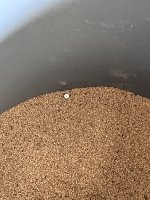This always seem to to be one of the most divisive subjects, where everyone thinks they have a secret trick but nobody can prove why their method is any better.
Having watched the era of the homereloader annealing cases begin and reloaded my first seveal thousand cases in an era before it started. I always wonder when people talk about annealing and what it does for them. How many rounds they reloaded before they started annealing. How many firings they were accustom to getting out of a case. How often they were splitting necks. As compared to the present.
I routinely made it to 15 without loosing more than a couple to split necks before I started annealing. I rouitey had acceptable verticals out to 1k without annealing.
I would guesstimate I split less necks now by a little. I split a couple necks in some 7-8x 6 arc brass recently. I went ahead and annealed the brass and haven't split another they are at 11 now.
Could the temperature range to get acceptable results is much wider than people think? As evidenced by the fact that everyone says their process works. Is it much easier to do than people make it out to be?
In my opnion the most important part of the process is dealing with oxidation inside the neck afterward. After that most of us aren't shooting the diffrence anyway.

 I know half of sniperhides brass isn't making it past 4 or 5x before the pockets give out.
I know half of sniperhides brass isn't making it past 4 or 5x before the pockets give out. 


Thoughts, rants, dissertations, adhominem, poems, shit slinging, monkey sounds and slap fighting, all welcome here. I don't judge.


Having watched the era of the homereloader annealing cases begin and reloaded my first seveal thousand cases in an era before it started. I always wonder when people talk about annealing and what it does for them. How many rounds they reloaded before they started annealing. How many firings they were accustom to getting out of a case. How often they were splitting necks. As compared to the present.
I routinely made it to 15 without loosing more than a couple to split necks before I started annealing. I rouitey had acceptable verticals out to 1k without annealing.
I would guesstimate I split less necks now by a little. I split a couple necks in some 7-8x 6 arc brass recently. I went ahead and annealed the brass and haven't split another they are at 11 now.
Could the temperature range to get acceptable results is much wider than people think? As evidenced by the fact that everyone says their process works. Is it much easier to do than people make it out to be?
In my opnion the most important part of the process is dealing with oxidation inside the neck afterward. After that most of us aren't shooting the diffrence anyway.
Thoughts, rants, dissertations, adhominem, poems, shit slinging, monkey sounds and slap fighting, all welcome here. I don't judge.



